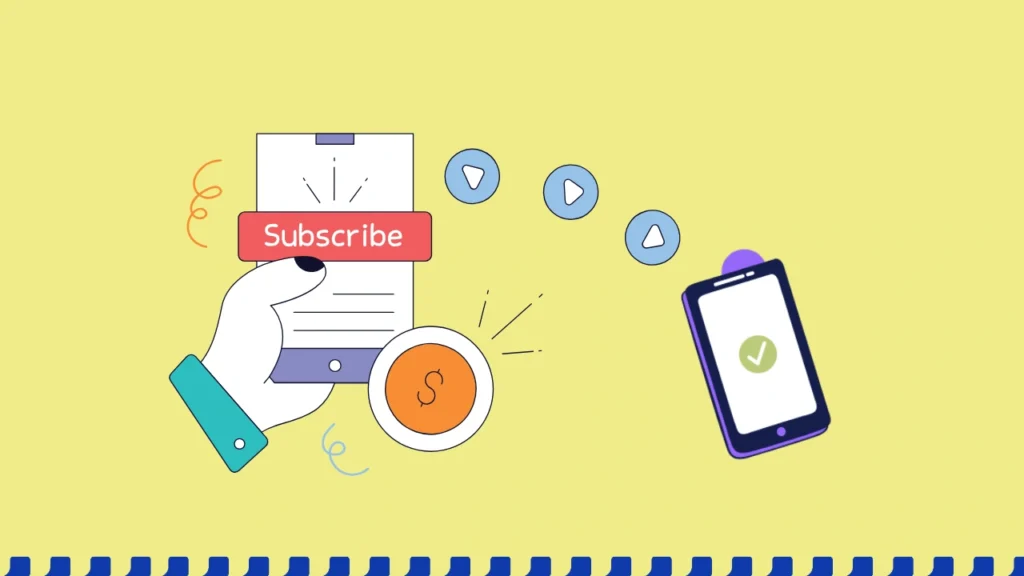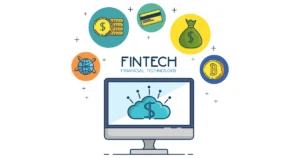Did you know that the subscription business model, which has become remarkably popular in recent years, has actually existed since the 16th century? While it has been adopted in various industries throughout history, it has gained significant traction in modern times with the rise of subscription-based software-as-a-service (SaaS) solutions and streaming services like Netflix and Blue Apron. Thanks to subscription payments, customers can now access a wide range of product offerings without any major upfront investments.
In this article, we will delve into the world of subscription payments, exploring what they are, why they are popular, their benefits, how they operate, available billing tools, and steps to set up subscription payments for your business. Let’s learn!
What are Subscription Payments?
Subscription payments are recurring transactions that customers make to access products or services for a specific period. Unlike traditional one-time purchases, subscription models provide customers with ongoing access to products or services in exchange for regular payments, usually on a monthly or yearly basis.
Why are Subscription Payments Gaining so Much Ground?
In recent years, subscription payments have become increasingly popular across various industries due to the convenience, flexibility, and value they offer.
Unlike traditional one-time purchases, subscription models provide customers with continuous access to products or services for a recurring fee, eliminating the need for frequent transactions. This convenience resonates well with the modern customer, who values seamless experiences and easy access to essential goods and services.
Also, subscription payments have become increasingly popular because they cater to the changing preferences of today’s digitally-driven society. With the growth of e-commerce and digital content consumption, customers are looking for flexible and affordable ways to access a wide range of offerings, and subscription payments provide just that!
What are the benefits of subscription payments?
Subscription payments offer considerable benefits for both customers and businesses.
- Convenience and Flexibility: Subscription payments provide convenience and flexibility to customers, enabling them to access desired products or services without the hassle of one-time purchases.
- Greater Control Over Spending: Subscription models provide customers with greater control over their spending habits through tiered pricing plans and customization options, enabling them to cancel or modify their subscriptions at any time.
- Better Customer Acquisition: Subscription models offer businesses the chance to attract new customers through trial periods, discounts, and promotional offers. Once your customers have a chance to experience the value of the subscription, they are more likely to become long-term subscribers. This, in turn, drives sustainable growth and profitability for your business.
- Customer Loyalty: Subscription payments foster deeper connections with customers by offering ongoing value and personalized experiences. This can lead to higher retention rates and lifetime value. The recurring nature of subscriptions also encourages customers to engage with your brand continuously, building trust and loyalty over time.
- Predictable Revenue Stream: Subscription payments provide businesses with a steady and predictable source of revenue, which helps to mitigate the uncertainty associated with one-time transactions. This predictable cash flow enables businesses to plan and allocate resources better, leading to long-term growth and stability.
- Data-Driven Insights: Subscription payments can provide valuable data insights that businesses can use to optimize their pricing strategies, personalize their offerings, and improve their customer experiences. By analyzing subscription metrics such as churn rate, retention rate, and lifetime value, your business can make informed decisions to drive growth and enhance profitability.
How do subscription payments work?
Subscription payments allow customers to receive products or services on a recurring basis in exchange for regular payments. Here is a breakdown of the process:
- Subscription Sign Up: First, customers sign up for a subscription plan offered by a business through the company’s website, app, or other designated platforms.
- Payment Authorization: Customers provide their payment details, including credit card or bank account information, and authorize the business to charge them at regular intervals, such as monthly or annually.
- Payment Processing: Once the subscription is set up and the customer provides their payment details, the payment processor (such as Stripe or PayPal) will automatically charge their payment method based on the agreed billing cycle.
- Access Granted: Once the payment processing is successful, customers will be granted access to the subscribed products or services for the duration of their subscription period.
- Renewal and Cancellation: Subscriptions normally renew automatically at the end of each billing cycle, unless the consumer cancels. Customers can adjust their subscriptions, upgrade or downgrade plans, or cancel completely by accessing their account settings or contacting customer service.
- Communication and Notifications: Businesses typically send notifications to customers before subscription renewals, confirming upcoming charges and offering the option to make changes or cancel if necessary, so there is no pressure!
- Customer Support: Customer support teams are typically on standby to attend to you concerning any subscription-related inquiries, billing issues, or account management needs.
Options of Subscription Billing Tools
To simplify the process of managing subscriptions and processing payments, businesses can leverage the plethora of subscription billing tools available on the market. These tools offer comprehensive solutions for managing billing, invoicing, subscription analytics, and customer management. Some of the popular subscription billing tools include:
Stripe
Stripe is a highly versatile payment gateway that provides a wide range of features for businesses of all sizes. It supports subscription billing, invoicing, and revenue optimization, making it an ideal choice for companies that want to streamline their payment processing. Stripe offers seamless integration with various e-commerce platforms. Additionally, it provides advanced features for subscription management, such as customizable billing cycles, proration, and usage-based billing. With Stripe, businesses can also enjoy unparalleled security and compliance, thanks to its robust fraud prevention tools and PCI DSS (Payment Card Industry Data Security Standards) compliance.
Recurly
Recurly is an enterprise-grade subscription billing platform that provides a comprehensive solution for businesses to manage their recurring billing, subscription lifecycle management, and revenue recognition. It offers flexible pricing models and robust analytics to help businesses optimize their subscription strategies. Recurly supports multiple payment gateways, currencies, and payment methods, making it easier for businesses to serve their customers globally.
Chargebee
Chargebee is a powerful subscription management platform designed to automate and streamline your billing, invoicing, and subscription lifecycle management processes. With Chargebee, you can easily manage all aspects of your subscription business, from product catalog management to customer billing and payments. Chargebee supports multiple payment gateways, tax compliance, and revenue reporting, making it an ideal choice if you are looking to scale your business.
Zuora
Zuora is a cloud-based subscription management platform that caters to the needs of businesses that operate on a subscription-based model, regardless of the industry they belong to. Zuora’s comprehensive suite of solutions covers the entire spectrum of subscription management, from billing and revenue recognition to customer lifecycle management.
PayPal Subscriptions
PayPal provides an all-in-one subscription billing solution that caters to businesses of all sizes. The platform allows businesses to create and manage recurring payment plans with ease, streamlining the entire billing process. PayPal subscriptions are designed to integrate seamlessly with existing e-commerce platforms, making it easier for businesses to set up and manage subscription-based services. With advanced security features in place, PayPal Subscriptions ensures that customer data is kept safe and secure at all times. Additionally, the platform offers detailed reporting capabilities, giving businesses valuable insights into their subscription revenue and customer behavior.
How Can You Set Up a Subscription Payment for Your Business?
Setting up subscription payments for your business is a simple process that can improve your revenue streams and customer relationships. Here’s a simple guide on how to get started:
Step 1: Choose the Right Payment Processor
When setting up a subscription billing system for your business, choose a reliable payment processor that supports subscription billing. Consider using a popular option such as Stripe, PayPal or Square. Make sure they offer seamless integration with your e-commerce platform. Additionally, prioritize a processor that offers robust security features to protect sensitive customer data.
Step 2: Define Your Subscription Plans
Determine the pricing tiers, billing intervals, and features for your subscription plans. Consider offering multiple options to cater to different customer needs and budgets. It’s also important to communicate the benefits of each plan to attract subscribers and increase conversions.
Step 3: Set Up Your Payment Gateway
To receive payments from your customers, you need to integrate your website or e-commerce platform with your payment processor. Follow the instructions provided by your payment provider to configure subscription billing settings, such as billing cycles, trial periods, and automatic renewals. It’s crucial to test the payment flow to ensure a smooth and secure checkout experience for your customers.
Step 4: Implement Subscription Management System
Automate billing, invoicing, and customer management tasks with subscription management software like Chargebee, Recurly, or Zuora. These platforms provide comprehensive solutions for tracking customer accounts, managing subscriptions, and handling payment disputes.
Step 5: Clearly Communicate Subscription Terms
Clearly communicate your terms of subscription, pricing, and cancellation policies to customers during the signup process. It is also crucial to provide transparent billing invoices to establish trust and transparency. Also, make it easy for customers to manage their subscriptions and update payment information as per their requirements.
Step 6: Track Your Performance and Optimize
Regularly monitor the performance metrics of your subscriptions, such as churn rate, customer acquisition cost, and revenue growth. Use analytics insights to optimize your pricing strategies, enhance customer retention, and improve overall profitability. Also, it is important to constantly iterate and refine your subscription offerings based on customer feedback and market trends. I mean, why do business if not for customer satisfaction?
Go Ahead and Set Up Subscription Payment for Your Business!
Whether you are a startup or a well-established enterprise, incorporating subscription payments into your business strategy is a game-changer! By adopting the subscription business model and leveraging advanced billing tools, you can unlock new revenue streams, improve customer relationships, and stay ahead in the digital economy.
Frequently Asked Questions About Subscription Payments
What is the difference between subscriptions and installments?
Subscriptions and installments are two distinct payment approaches.
Subscriptions involve a recurring charge for ongoing access to a product or service, typically until the subscriber opts out.
Installments, however, are a series of scheduled payments that contribute towards the full cost of an item, concluding when the total amount is paid.
What is subscription billing?
Subscription billing is a model where customers pay regularly to maintain access to products or services. This approach focuses on long-term customer relationships and provides a steady income for companies.
How many subscriptions do you need to make money?
The number of subscriptions required to be profitable varies widely. It depends on several factors, including the business model, pricing strategy, and operational expenses. Profitability is achieved when the number of subscribers is sufficient to cover costs and yield a profit, which could mean a few high-value subscriptions or many with lower value.




